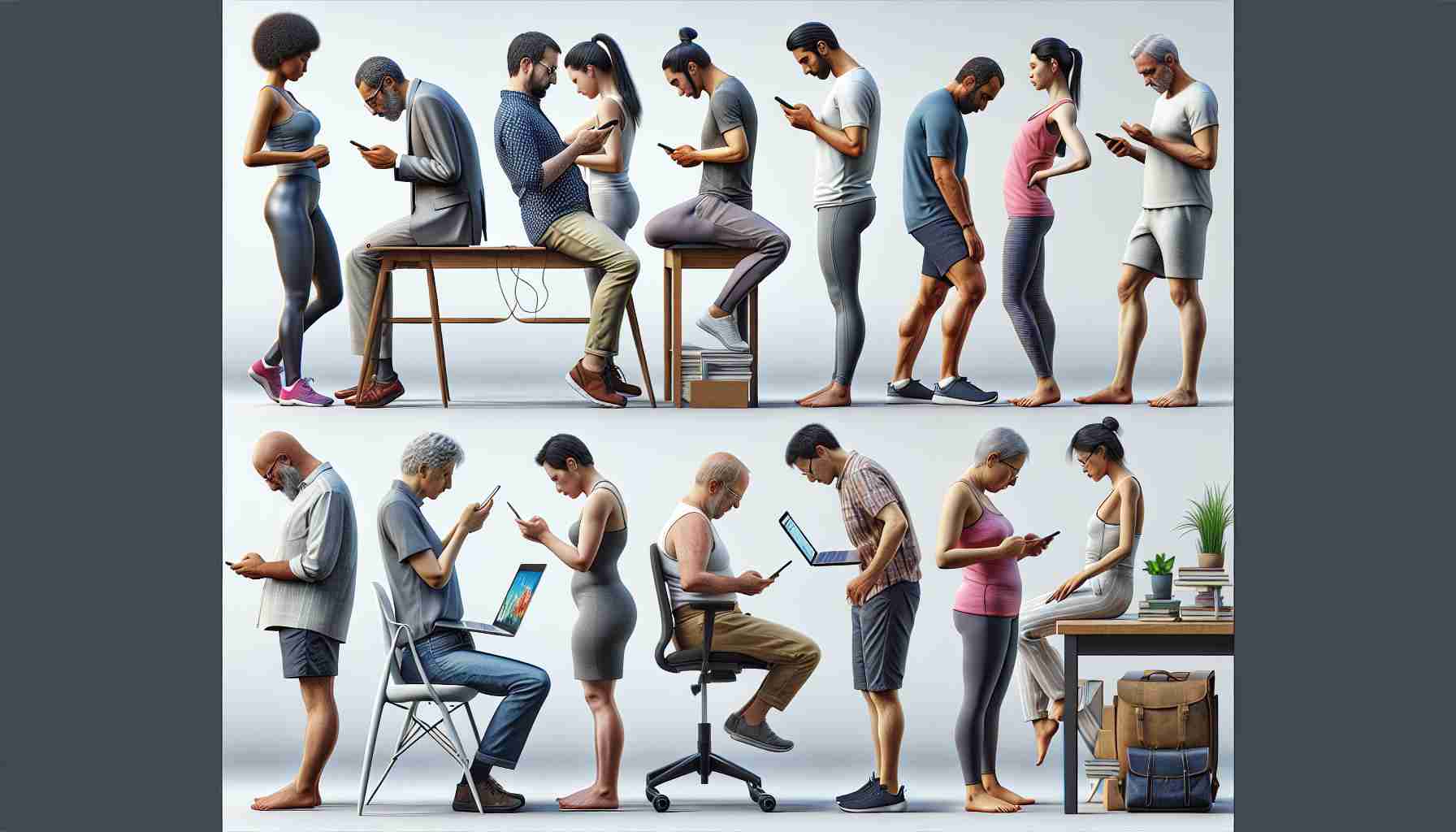Technology has become an integral part of our lives, revolutionizing the way we live and work. However, along with its numerous benefits, technology has brought about health issues that are closely tied to the way we use devices. Improper posture while using technology, similar to the concerns of incorrect workstation ergonomics, has become a significant problem that affects our overall well-being.
According to recent statistics, the average person now spends a staggering 10 hours and 39 minutes a day on various screens, including smartphones, computers, TVs, and the internet. The prevalence of smartphone use is particularly astonishing, with approximately 94% of Americans aged 18 to 29 relying on these devices. Furthermore, the global population’s reliance on smartphones accounts for 63% of internet users and 92% of internet access time through mobile devices.
The consequences of improper posture, often referred to as “tech neck,” are still being researched. The neck, shoulders, and back bear the brunt of the strain caused by a forward head tilt while looking down at electronic devices. This can lead to musculoskeletal disorders, which gradually develop over time and can impact various parts of the body, including muscles, nerves, tendons, ligaments, joints, cartilage, and even disc space.
Specific activities, such as texting, have been found to place greater strain on the neck compared to watching videos or browsing the internet. Furthermore, using devices on the lap puts more stress on the neck than using them on a table, where the neck is in a more natural position, reducing strain.
To avoid tech neck and its potential long-term effects, it is crucial to be mindful of posture. Applying ergonomic principles used for computer workstations to mobile devices can make a significant difference. Maintaining proper posture, such as sitting up straight, keeping the back against the chair, holding the shoulders back, straightening the head, and raising the device to eye level, can help prevent the development of tech neck.
However, poor posture not only affects the neck, shoulders, and back but also impacts other organ systems, such as the gastrointestinal and respiratory systems, ultimately affecting overall health. It can lead to overworked muscles, compromised immune function, and even contribute to issues like jaw pain and headaches.
Recognizing the importance of posture while using mobile devices and taking proactive measures to maintain good posture are crucial steps in reducing the risk of tech neck and minimizing its effects. As technology continues to evolve, prioritizing our physical well-being in the face of these advancements becomes increasingly important.
FAQs about Posture Health Issues Caused by Technology:
1. Why is posture while using technology a significant problem?
Improper posture while using technology, commonly known as “tech neck,” can lead to musculoskeletal disorders and impact various parts of the body, such as muscles, nerves, tendons, ligaments, joints, and cartilage. It can also have long-term effects on overall health.
2. How much time do people spend on screens daily?
According to recent statistics, the average person spends approximately 10 hours and 39 minutes a day on various screens, including smartphones, computers, TVs, and the internet.
3. What percentage of Americans rely on smartphones?
Around 94% of Americans aged 18 to 29 rely on smartphones, making them highly dependent on these devices.
4. What are the consequences of tech neck?
Tech neck can cause strain on the neck, shoulders, and back from the forward head tilt while looking down at electronic devices. These strains can lead to musculoskeletal disorders and impact various parts of the body. However, further research is needed to fully understand its long-term effects.
5. Which activities place greater strain on the neck?
Texting has been found to place greater strain on the neck compared to watching videos or browsing the internet.
6. Does the way devices are used influence strain on the neck?
Using devices on the lap puts more stress on the neck than using them on a table, where the neck is in a more natural position, reducing strain.
7. How can tech neck be prevented?
To avoid tech neck, it is important to maintain proper posture while using mobile devices. This includes sitting up straight, keeping the back against the chair, holding the shoulders back, straightening the head, and raising the device to eye level.
8. How does poor posture affect overall health?
Poor posture not only affects the neck, shoulders, and back but can also impact other organ systems such as the gastrointestinal and respiratory systems. It can lead to overworked muscles, compromised immune function, and contribute to issues like jaw pain and headaches.
9. What can be done to reduce the risk of tech neck?
Recognizing the importance of posture while using mobile devices and taking proactive measures to maintain good posture are crucial steps in reducing the risk of tech neck. Applying ergonomic principles used for computer workstations to mobile devices can help make a significant difference.
Key Terms:
– Tech neck: Refers to the consequences of improper posture while using technology, particularly strain on the neck, shoulders, and back from a forward head tilt.
Related Links:
– Medical News Today
– Mayo Clinic: Sitting risks
